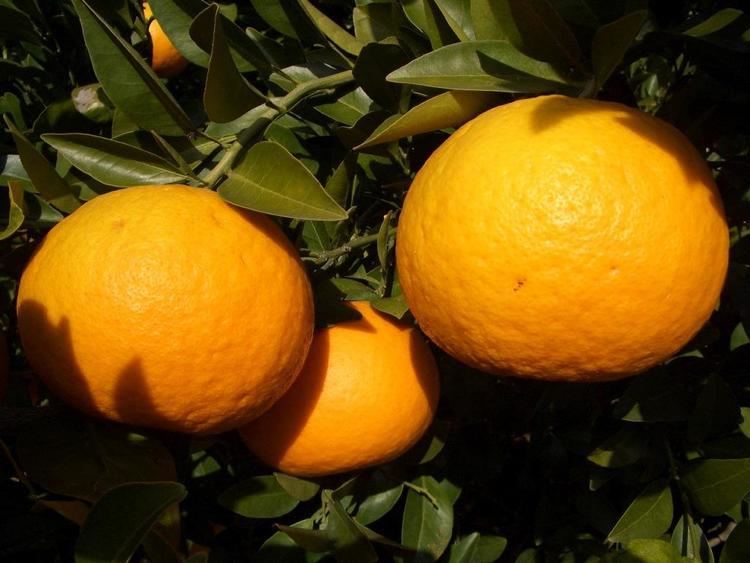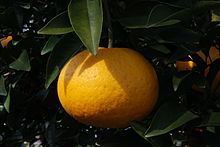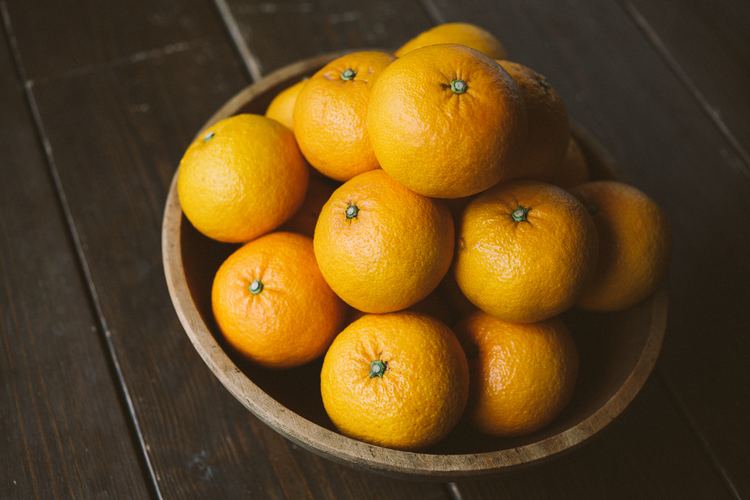Kingdom Plantae Rank Species | Genus Citrus Higher classification Citrus | |
 | ||
Similar Hassaku orange, Satsuma Mandarin, Iyokan, Ponkan, Hyuganatsu | ||
Trying out amanatsu orange and grapefruit
Amanatsu (甘夏) or natsumikan is a yellowish orange citrus hybrid fruit, a group of cultivars of Citrus natsudaidai (ナツミカン(夏蜜柑?), which were discovered in 1740 in the Yamaguchi prefecture of Japan.
Contents
- Trying out amanatsu orange and grapefruit
- how to eat amanatsu a sweet watson pomelo
- Names
- Description
- Cultivation
- Genetics
- Medicine
- References
how to eat amanatsu a sweet watson pomelo
Names

In Japan, it is officially known as the kawano natsu daidai (カワノナツダイダイ(川野夏橙)?), but also colloquially the amanatsu, amanatsu daidai (甘夏橙), amanatsukan (甘夏柑), and amanatsu mikan (甘夏蜜柑(甘夏みかん)).
Description

Natsumikan is about the size of grapefruit and oblate in shape. The fruit contains 12 segments and about 30 seeds. The rough textured fruit is easy to peel and is commonly eaten fresh. It is also used for wide variety of products ranging from marmalades to alcoholic beverages.
Cultivation

Natsumikan is grown commercially in Japan, notably in Yamaguchi, Kumamoto and Ehime prefecture. The city of Hagi is famous for its natsumikans, particularly when used in natsumikan juice and ice cream.

Yamaguchi Prefecture takes such pride in their natsumikan industry that the typically white crash barriers of Japan were changed to a befitting orange.
Genetics
The natsumikan tree is believed to be genetically derived from the pomelo (Citrus grandis or Citrus maxima).
Medicine
Researchers found that immature natsumikan peel is beneficial for the treatment of chronic allergic dermatitis in mice.


